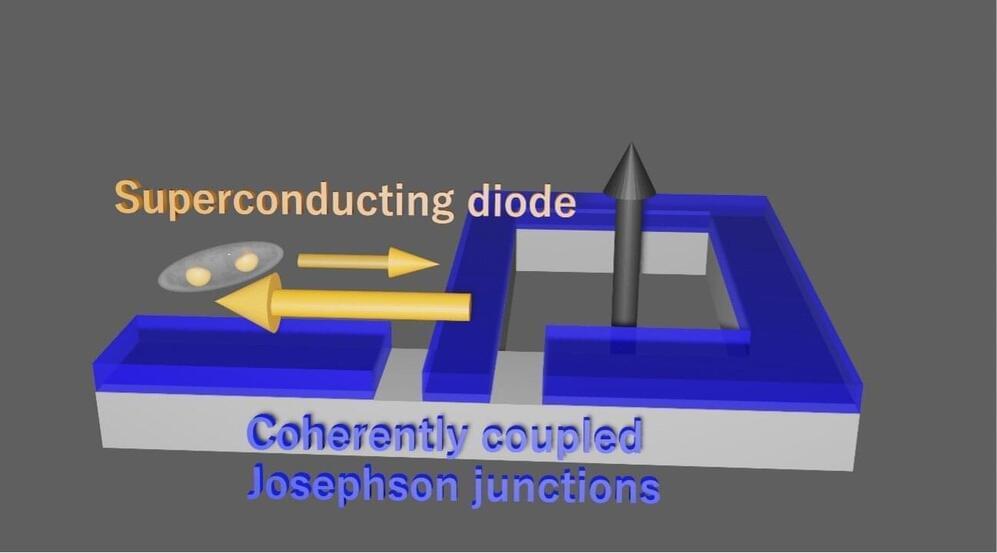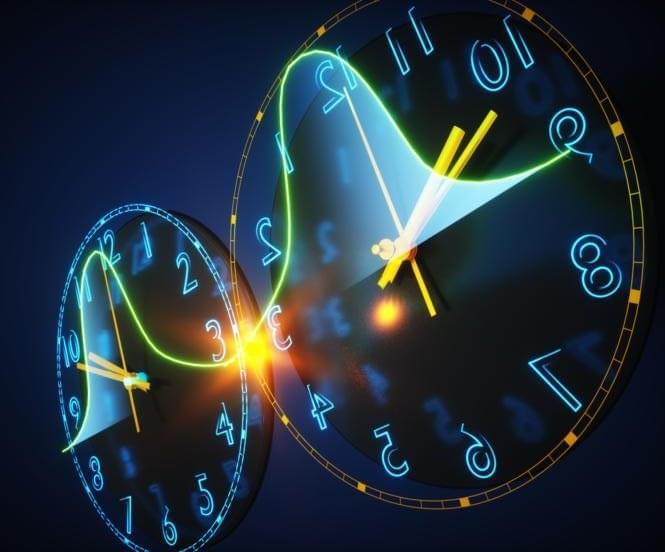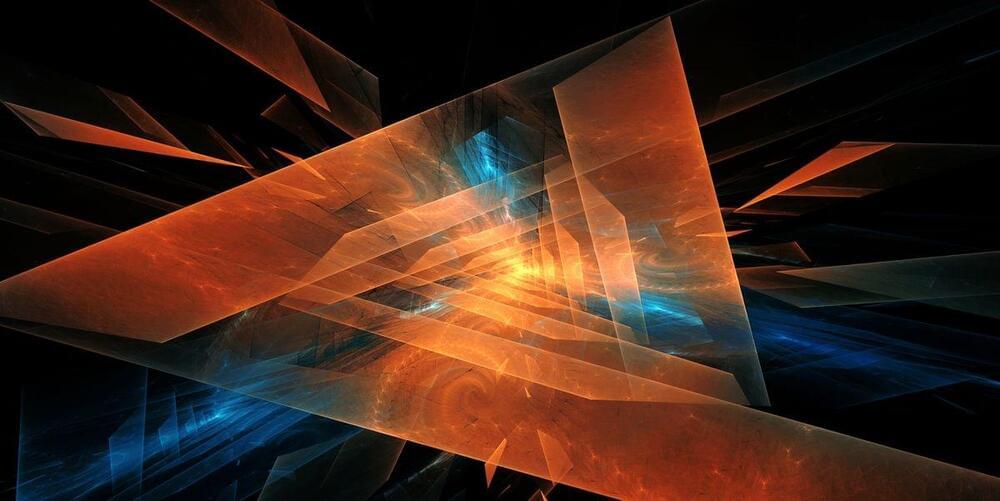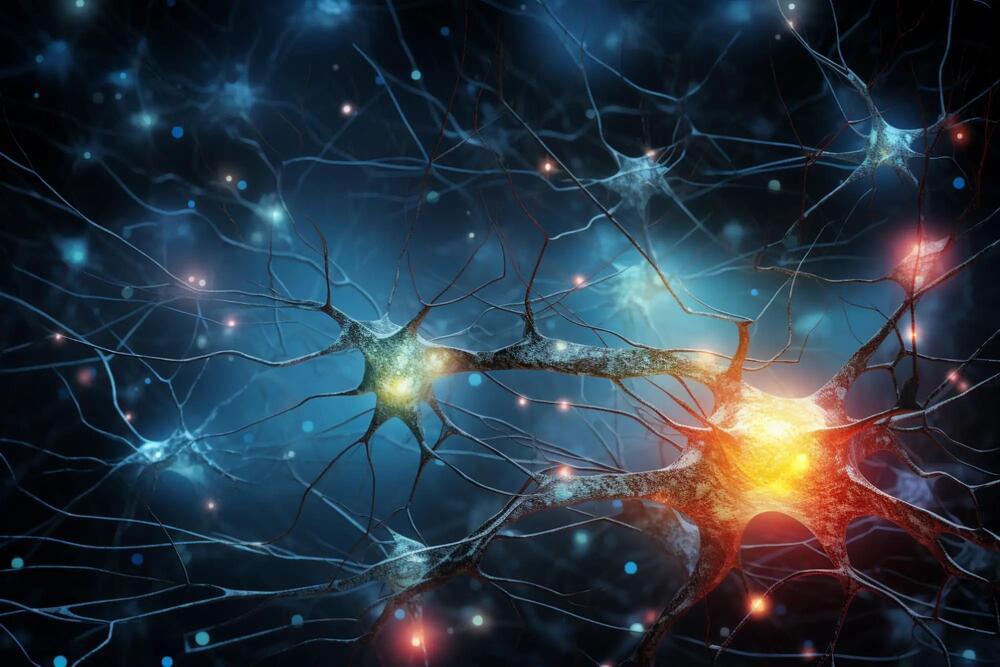Archive for the ‘engineering’ category: Page 49
Aug 27, 2023
Bioactive near-infrared II clusters for 3D imaging and acute inflammation inhibition
Posted by Saúl Morales Rodriguéz in categories: biotech/medical, engineering, neuroscience
The bioactivity of most near-infrared II (NIRII) fluorophores are limited, thereby conflicting the achievement of strong fluorescence and high catalytic activities, due to a lack of free electrons in the method.
To overcome this challenge, Huizhen Ma and a research team in translational medicine, neural engineering, physics, and materials at the Tianjin University China developed atomically precise gold clusters with strong near-infrared II fluorescence to show potent enzyme-mimetic activities by using atomic engineering, to form active copper single-atom sites.
These gold-copper clusters (Au21 Cu1) showed higher antioxidant nature with a 90-fold catalase-like and 3-fold higher superoxide dismutase-like activity compared to gold clusters alone. These clusters can be cleared through the kidney to monitor cisplatin-induced renal injury within a 20–120-minute window to visualize the process in 3D via near-infrared light-sheet microscopy.
Aug 26, 2023
Researchers discover novel approach for rebuilding, regenerating lung cells
Posted by Shubham Ghosh Roy in categories: biotech/medical, engineering
Researchers from the Center for Regenerative Medicine (CReM), a joint venture between Boston University and Boston Medical Center, have discovered a novel approach for engrafting engineered cells into injured lung tissue. These findings may lead to new ways for treating lung diseases, such as emphysema, pulmonary fibrosis and COVID-19.
The two studies describing the methodologies for engineering lung stem cells and transplanting them into injured experimental lungs without immunosuppression appear online in Cell Stem Cell.
For more than 20 years, the scientists leading this work have pursued a way to engraft cells into injured lung tissues with the goal of regenerating lung airways or alveoli. They suspected that for engraftment to be long-lived and functional it would be important to reconstitute the stem or progenitor “compartments” of the lung, also sometimes known as stem cell niches.
Aug 25, 2023
Meet Jasmin Moghbeli, a Marine helicopter pilot and mom of twins who is leading a crew to the space station
Posted by Genevieve Klien in categories: engineering, space travel
The SpaceX Crew-7 flight will take an international team of four to the space station. Moghbeli will be the only American abroad, and is leading the mission.
The daughter of Iranian political refugees, Moghbeli went to astronaut camp as a teenager and got a degree at MIT. She played three sports, including basketball, and with space in mind studied aeronautical engineering.
She later had a gutsy career as a Marine attack helicopter pilot, serving in more than 150 combat missions – part family tradition, part service to her country and part in service to her space dreams.
Aug 24, 2023
The superconducting diode effect in a device based on coupled Josephson junctions
Posted by Saúl Morales Rodriguéz in categories: computing, engineering, physics
The so-called superconducting (SC) diode effect is an interesting nonreciprocal phenomenon, occurring when a material is SC in one direction and resistive in the other. This effect has been the focus of numerous physics studies, as its observation and reliable control in different materials could enable the future development of new integrated circuits.
Researchers at RIKEN and other institutes in Japan and the United States recently observed the SC diode effect in a newly developed device comprised of two coherently coupled Josephson junctions. Their paper, published in Nature Physics, could guide the engineering of promising technologies based on coupled Josephson junctions.
“We experimentally studied nonlocal Josephson effect, which is a characteristic SC transport in the coherently coupled Josephson junctions (JJs), inspired by a previous theoretical paper published in NanoLetters,” Sadashige Matsuo, one of the researchers who carried out the study, told Phys.org.
Aug 24, 2023
Researchers Manipulating Time Cause First-Ever Successful Photon Collisions
Posted by Dan Breeden in categories: computing, engineering
Researchers have successfully forced electromagnetic (EM) waves that usually pass right through each other to collide head-on by manipulating time, made possible with the unique properties of metamaterials.
Inspired by the concept of using macro-scale waves like tsunamis or earthquakes to cancel each other out, the manipulation of time interfaces to cause these photons to collide instead of pass through each other could open up a wide range of engineering applications, including advances in telecommunications, optical computing, and even energy harvesting.
Is Using One Wave to Cancel Another Wave Possible?
Aug 23, 2023
An Incredible New Crystal Can Transform Light Into Mechanical Work
Posted by Josh Seeherman in categories: biological, chemistry, engineering
Almost all forms of modern consumer technology are powered by electrochemical energy, otherwise known as batteries. Lithium-ion batteries, for example, transform chemical reactions into direct current energy while also producing a few side effects (mainly heat). But what if there was another way to power gadgets—say, lasers?
That’s the idea behind new research from the Department of Chemical and Biological Engineering and CU-Boulder. In a new study published this month in the journal Nature Materials, the team—led by chemical and electrical engineering professor Ryan Hayward—explored ways to leverage tiny crystals and directly transform light into mechanical work. At scale, such a breakthrough could remove the need for bulky batteries and all of the thermal management that comes with it.
Aug 22, 2023
Neural Navigators: How MIT Cracked the Code That Relates Brain and Behavior in a Simple Animal
Posted by Jose Ruben Rodriguez Fuentes in categories: education, engineering, neuroscience
MIT researchers have created a detailed map of neuron activity in the C. elegans worm, revealing how neurons encode behavior. Using cutting-edge technology, they discovered neurons’ capability to adjust their encoding based on various factors and conditions. Their findings provide a comprehensive neural behavior atlas for further studies.
MIT
MIT is an acronym for the Massachusetts Institute of Technology. It is a prestigious private research university in Cambridge, Massachusetts that was founded in 1861. It is organized into five Schools: architecture and planning; engineering; humanities, arts, and social sciences; management; and science. MIT’s impact includes many scientific breakthroughs and technological advances. Their stated goal is to make a better world through education, research, and innovation.
Aug 21, 2023
Light-responsive nanocrystal array lifts 10,000 times its own mass
Posted by Omuterema Akhahenda in categories: chemistry, engineering, physics, transportation
Researchers have developed a novel material using tiny organic crystals that convert light into a substantial mechanical force able to lift 10,000 times its own mass. Without the need for heat or electricity, the photomechanical material could one day drive wireless, remote-controlled systems that power robots and vehicles.
Photomechanical materials are designed to transform light directly into mechanical force. They result from a complex interplay between photochemistry, polymer chemistry, physics, mechanics, optics, and engineering. Photomechanical actuators, the part of a machine that helps achieve physical movements, are gaining popularity because external control can be achieved simply by manipulating light conditions.
Researchers from the University of Colorado, Boulder, have taken the next step in the development of photomechanical materials, creating a tiny organic crystal array that bends and lifts objects much heavier than itself.
Aug 20, 2023
Brain Photobiomodulation Devices
Posted by Dan Breeden in categories: engineering, health, neuroscience
Vielight brain photobiomodulation devices combine electrical engineering and neuroscience to improve brain health and performance.

















